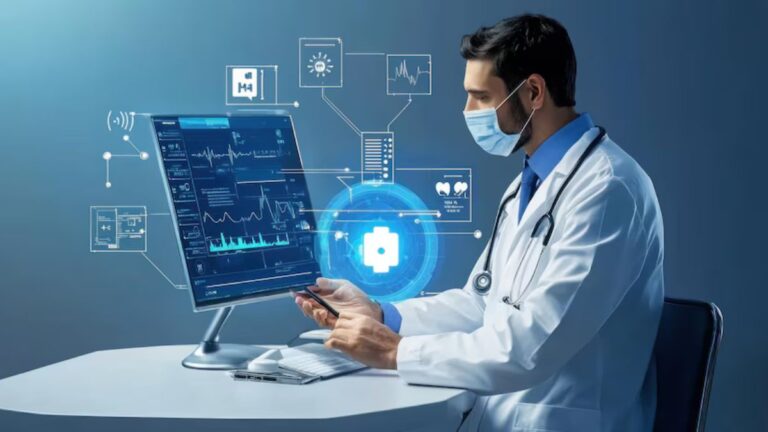Ensuring healthcare software safety involves data encryption, regular security updates, and strict compliance with privacy regulations like HIPAA. Healthcare providers should assess software for vulnerabilities, implement multi-factor authentication, and train staff on cybersecurity best practices. A robust security protocol protects sensitive patient data from breaches and ensures the integrity of healthcare systems.
Introduction to Healthcare Software Security
Numerous advantages have resulted from the digitization of healthcare, including enhanced patient care, more straightforward procedures, and superior data management. However, it has also invited new risks that must be meticulously managed. Understanding whether your healthcare software is safe is crucial for any healthcare provider. Ensuring the security of healthcare software involves considering multiple facets, including data encryption, user authentication, and regular security audits. For comprehensive and reliable healthcare software solutions, it’s essential to consider various security aspects and best practices. Let’s investigate what you need to know to ensure your software’s security and integrity.
Common Security Threats in Healthcare Software
Healthcare software is susceptible to an array of security threats. Among the most prevalent are malware, phishing attacks, and data breaches. Malware can infiltrate systems, compromise data, and lead to significant financial loss. Phishing attacks often trick employees into divulging sensitive information, which can be exploited. Data breaches are particularly alarming because they involve unauthorized access to confidential patient information. According to HealthITSecurity, healthcare has been one of the most targeted sectors by cybercriminals in recent years. The rise in assaults emphasizes the importance of strict security measures to shield private data from online dangers.
Why Security Matters in Healthcare Software
Healthcare software security includes protecting data, maintaining patient trust, and following laws like HIPAA. HIPAA establishes the standard for safeguarding confidential patient information, and healthcare professionals must adhere to these guidelines. CSO Online emphasizes that medical records are valuable targets for hackers due to the extensive personal information they contain. Unauthorized access to this data can result in fraud involving insurance policies, identity theft, and other nasty things. Robust security features in your medical software contribute to developing a solid rapport with your patients, who depend on you to protect and maintain the privacy of their data.
Features of Secure Healthcare Software
A secure healthcare software solution should encompass several critical features to protect against potential threats. These features include:
- End-to-end encryption: This ensures that data transmitted between users and the server is secure and cannot be intercepted by unauthorized entities.
- Multi-factor authentication: By implementing additional security measures in addition to passwords, it is possible to guarantee that only authorized users may access the system.
- Regular security updates: Software providers should continuously update the system to patch vulnerabilities and enhance security features.
- Secure access controls: Role-based access controls ensure that users have access only to the information necessary for their roles, minimizing the risk of unauthorized data access.
Steps to Assess the Security of Your Healthcare Software
Assessing the security of your healthcare software involves a proactive approach. Here are steps to help you evaluate and improve the security of your system:
- Conduct regular security audits. Frequent audits help locate weaknesses and offer information on areas that need development.
- Ensure compliance with industry standards: Adhering to standards such as HIPAA and GDPR (General Data Protection Regulation) is crucial for maintaining the security and privacy of patient data.
- Check for third-party security certifications: Certifications from trusted organizations can assure that the software meets high-security standards.
- Stay updated on the latest security trends: The cybersecurity landscape constantly evolves. Staying informed about new threats and mitigation strategies can help you keep your software secure.
Best Practices for Maintaining Software Security
Maintaining software security is an ongoing process that requires vigilance and effort. Here are some best practices to help keep your healthcare software secure:
Staff training: Regular training sessions on security protocols and awareness are essential. Workers should learn to spot phishing efforts, create secure passwords, and adhere to data security best practices.
Investing in security tools: Unauthorized access and assaults may be avoided using dependable security measures, including intrusion detection systems, firewalls, and antivirus software.
Implementing a robust data backup strategy: Regularly backing up data ensures that you can quickly recover in case of a breach or system failure. It’s important to store backups securely and test them periodically to ensure their effectiveness.
The Future of Healthcare Software Security
With technological advancements, the future of healthcare software security looks promising. Innovations like artificial intelligence (AI) and blockchain technology are being explored to enhance security measures. AI-based proactive threat detection can assist in discovering and reducing threats before they significantly harm a system. Blockchain technology offers secure data sharing and tamper-proof record-keeping, providing higher security for sensitive information. These technological advancements hold the potential to revolutionize how healthcare data is secured and managed, paving the way for a more secure and efficient healthcare system.
